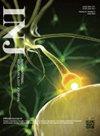Commentary on "Risk Factors for Transurethral Coagulation for Hemostasis During Holmium Laser Enucleation of the Prostate".
IF 2.1
3区 医学
Q3 UROLOGY & NEPHROLOGY
引用次数: 0
Abstract
Copyright © 2022 Korean Continence Society This is an Open Access article distributed under the terms of the Creative Commons Attribution Non-Commercial License (https://creativecommons.org/licenses/by-nc/4.0/) which permits unrestricted non-commercial use, distribution, and reproduction in any medium, provided the original work is properly cited. Corresponding author: Pankaj N. Maheshwari https://orcid.org/0000-0002-9055-0238 Fortis Hospital Mulund, Mulund West, Mumbai 400080, India Email: dr.maheshwaripn@gmail.com Submitted: October 9, 2022 / Accepted after revision: November 23, 2022 To the editor, We read the manuscript, ‘Risk factors for transurethral coagulation for hemostasis during holmium laser enucleation of the prostate,’ by Yoon et al. [1] with huge interest. We would like to complement the authors for a large experience in holmium laser enucleation of the prostate (HoLEP) and an interesting account of need of electro-cautery during the procedure. The need for electro-cautery coagulation in 22.8% patients is indeed very high. It was used in about 19.1% to make the vision clearer for morcellation but even 3.7% for bleeding that could not be controlled by laser coagulation is high. HoLEP as a part of management protocol has been available for more than 2 decades and apart from the initial learning curve, electro-coagulation is rarely needed. It is very difficult to agree with the conclusion that the risk of electro-coagulation increases in patients with transitional zone volume >35 mL. HoLEP is indicated for large volume adenoma [2] and the proposed odds ratio for need for coagulation of 5.17 in ≥53.5-mL adenoma appears very high. The very fact that most recent guidelines propose HoLEP as a treatment of choice for large prostate volumes and for patients on antiplatelet or anticoagulant medications is a testament for its coagulation capabilities [3]. The authors presumption that the risk of bleeding increases as the prostate volume increases because the larger the prostate, the more blood supply is required, and thus, the blood vessel density increases may not hold true for HoLEP as in contrast to transurethral resection of the prostate where we resect through the adenoma, during HoLEP the procedure is performed at the capsular level hence the blood vessel density in the prostatic tissue will not have an impact. We would like to provide our tips for reducing bleeding and hence need for electro-coagulation. (1) Use the laser at the highest possible frequency. The simultaneous coagulation is better at higher frequency. (2) During the dissection, it is important to remain on the capsule. The bleeding is more if you cut through the tissue. (3) Bleeding increases if there are capsular perforation. Being aware and avoiding them is important. (4) Dissect by nontouch technique by the plasma of the laser and not by direct cutting. (5) If bleeding is still there, a catheter with light traction and irrigation for a few minutes controls most bleeding. (6) If the bleeding is still significant to make morcellation difficult than either electro-coagulation or staging the procedure would help. One important reason for bleeding that needs electro-coagulation is the bleeding related to morcellation injury. The bladder mucosal injury is difficult to coagulate with laser. Although we agree that electro-surgical back-up is important during HoLEP, once you cross the learning curve, the need should be very rare.“钬激光前列腺摘除术中经尿道凝血止血的危险因素”评论。
本文章由计算机程序翻译,如有差异,请以英文原文为准。
求助全文
约1分钟内获得全文
求助全文
来源期刊

International Neurourology Journal
UROLOGY & NEPHROLOGY-
CiteScore
4.40
自引率
21.70%
发文量
41
审稿时长
4 weeks
期刊介绍:
The International Neurourology Journal (Int Neurourol J, INJ) is a quarterly international journal that publishes high-quality research papers that provide the most significant and promising achievements in the fields of clinical neurourology and fundamental science. Specifically, fundamental science includes the most influential research papers from all fields of science and technology, revolutionizing what physicians and researchers practicing the art of neurourology worldwide know. Thus, we welcome valuable basic research articles to introduce cutting-edge translational research of fundamental sciences to clinical neurourology. In the editorials, urologists will present their perspectives on these articles. The original mission statement of the INJ was published on October 12, 1997.
INJ provides authors a fast review of their work and makes a decision in an average of three to four weeks of receiving submissions. If accepted, articles are posted online in fully citable form. Supplementary issues will be published interim to quarterlies, as necessary, to fully allow berth to accept and publish relevant articles.
 求助内容:
求助内容: 应助结果提醒方式:
应助结果提醒方式:


